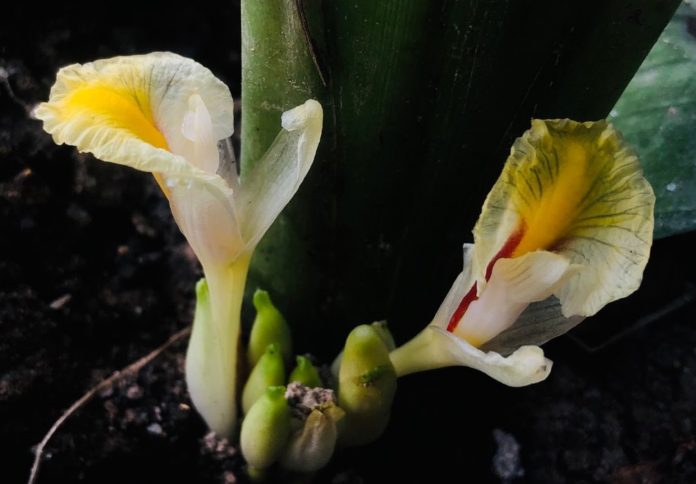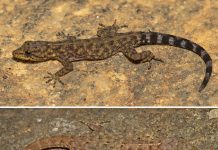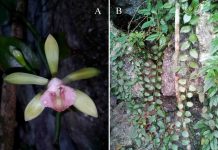The Amomum foetidum (Zingiberaceae) plant has so far been distributed in Sakon Nakhon province and is mostly cultivated in Northeastern Thailand. Amomum Roxb. is belongs to the subfamily Alpinioideae of the genus Alpinieae, in the Zingiberaceae family. The specific term “foetidum” is derived from the Latin word for pungent odor, which this plant emits an odor similar to the smell of the Stink Bugs (Tessaratoma papillosa Drury).
Furthermore, the species is also known by the northeastern Thai dialect word “manghong” which is an Isan word, which refers to the Stink Bugs. The Isan people usually use this Stink Bugs in cooking and the most popular is the chili paste called “Jaew-Mangkhang” with sticky rice. All parts of the Amomum plant have a similar odor and this plant is used in cooking as a substitute for Stink Bugs. This plant is easy to find for cooking throughout the year instead of Stink Bugs.
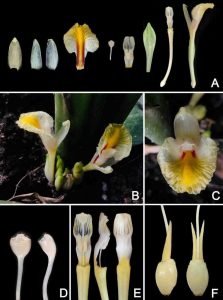
Amomum foetidum Boonma & Saensouk;
A. dissection (from left): dorsal corolla lobe, lateral corolla lobes, labellum, stigma, stamen, calyx, floral tube with stamen and ovary, flower (side view); B. flower (top and semi-side view); C. flower (top view); D. stigma (front and side view); E. stamen (front, side, and back view); F. ovary with epigynous glands (side and front view).
Photographed by Thawatphong Boonma.
This currently circumscribed genus is distributed from Sri Lanka and India through SE Asia to New Guinea, Bismarck Archipelago, and Australia. Thawatphong Boonma, The first author of the research article on that new species, obtained this plant from a plant shop in Sakon Nakhon Province (located in Northeastern or Isan part of Thailand) and has been cultivating it since 2017 in the Brio Garden in Nakhon Nayok Province. He worked with Surapon Saensouk and Piyaporn Saensouk, who worked to revising genus Elettariopsis s.s. for Flora of Thailand project, to identify this unknown species.
The unknown species they found that is similar to the previously classified Amomum Cinnamomum and Amomum species of the Eleutheropsis genus; Amomum curtisii ≡ Elettariopsis curtisii = Elettariopsis serpentina. It is not compatible with any existing species and is considered a new species and was described, illustrated and photographed under the name Amomum foetidum sp. nov.
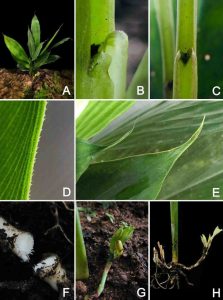
Amomum foetidum Boonma & Saensouk;
A. habit; B. ligule-side view; C. ligule-front view; D. leaf-margin with the prickly hairs at 1/3 of the leaf tip; E. leaf-apex; F. rhizome with fibers; G. inflorescence above the ground; H. inflorescences and underground part. Photographed by Thawatphong Boonma.
The bracts and peduncles of this species are white when it is in the underground or younger stage. It turns to green if it’s above the ground. A. Phytidum differs from other similar species and it is easily identified, the leaf margin glabrous except 1/3 of the margin of the leaf tip has the prickly hairs, pointed out of the margin and both edges of the leaf at the apex are rolled in while A. curtisii glabrous and A. cinnamomeum has a few sharp small teeth spaced well apart at the apex. The color of the calyx of A. foetidum is translucent white to pale green with green at the tip but A. curtisii is white and A. cinnamomeum is translucent cream white.
If you are interested to read more on this research, you can find the full research article in here
Cover Photo – Thawatphong Boonma











